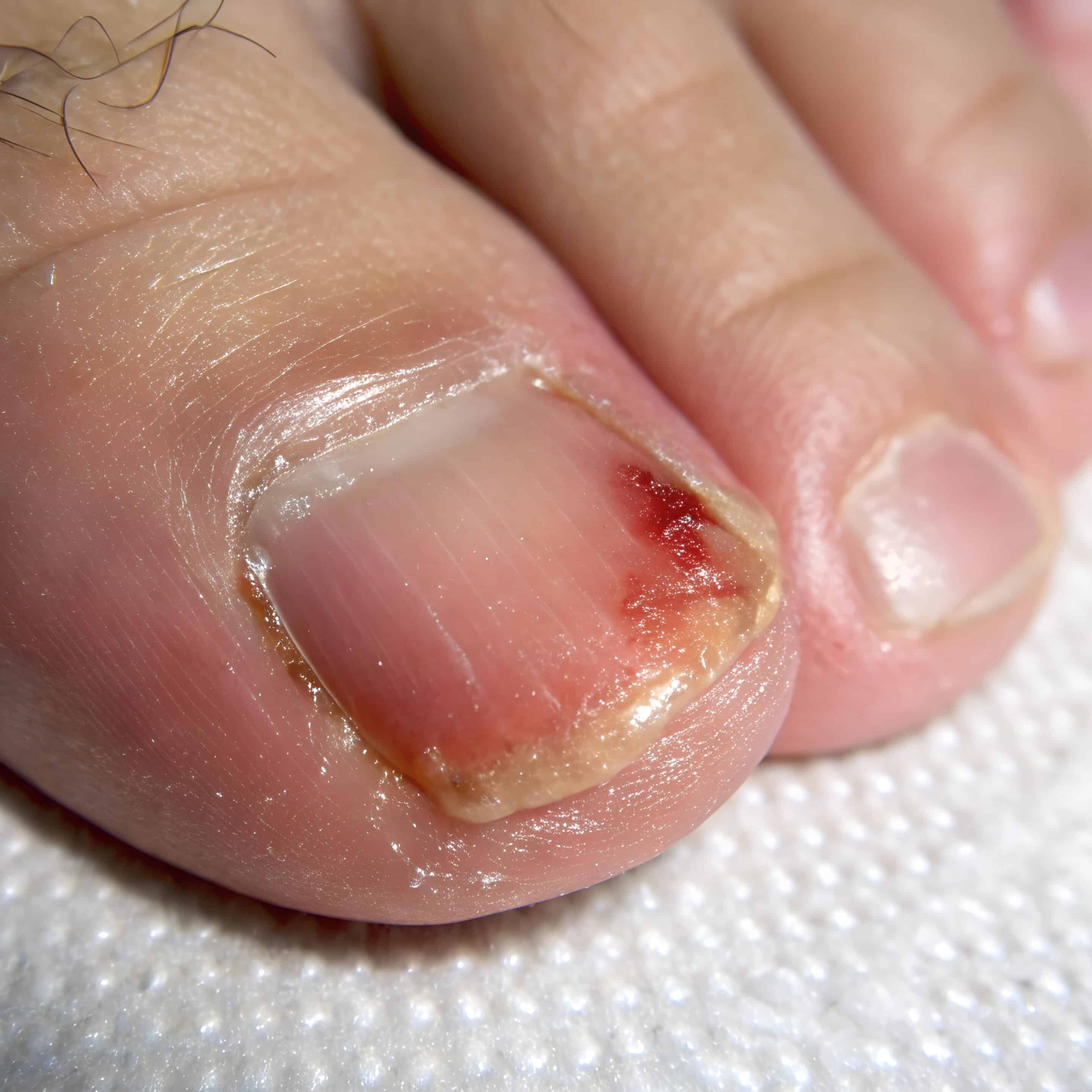Ingrown Toenails
Ingrown toenails are one of the most common foot conditions, and they can cause significant pain and frustration. Instead of growing outward normally, the edge or corner of a toenail curves into the surrounding skin, often on the big toe. This misdirected growth leads to pain, redness, swelling, and sometimes infection. If left untreated, the condition can worsen—particularly for people with diabetes or circulation problems, where infections may develop quickly.
The encouraging news is that ingrown toenails can be effectively treated with the right professional care. If you’ve been living with persistent discomfort or your ingrown toenail keeps coming back, it may be time to seek expert treatment.
Common Symptoms of Ingrown Toenails
Spotting the early warning signs of an ingrown toenail can prevent pain from progressing into more serious complications. Common symptoms include:
- Soreness and pressure along the nail’s edge
- Redness and swelling around the affected toe
- Warmth and sensitivity when wearing shoes or applying pressure
- Drainage or pus in advanced cases, signaling infection
- Difficulty walking or exercising due to discomfort
If you notice these symptoms—especially spreading redness or pus—it’s important to see a podiatrist promptly.
What Causes Ingrown Toenails?
Multiple factors can contribute to the development of an ingrown toenail. These include:
- Genetics: Some individuals are born with nails that naturally curve, making them more prone to ingrowth from an early age.
- Improper Nail Trimming: Cutting toenails too short or rounding the edges can cause the nail to grow into the skin instead of growing straight.
- Tight or Ill-Fitting Footwear: Shoes that crowd the toes or place too much pressure on the front of the foot can push nails into the skin, causing pain and irritation.
- Toe Injuries: Trauma such as stubbing your toe, dropping something heavy, or repetitive impact from sports like soccer or running may cause ingrown toenails to form.
Understanding these causes is the first step toward prevention and proper care.
Professional Ingrown Toenail Treatment
While mild cases might improve temporarily with conservative care, recurring or painful ingrown toenails require professional treatment for long-term relief.
Initial Evaluation
During your visit, your podiatrist will evaluate the severity of the ingrown toenail and check for signs of infection. If an infection is present, antibiotics may be prescribed before proceeding with treatment.
Treatment Process
Most patients can be treated in-office during their initial appointment. The process typically involves:
- Local Anesthetic: A numbing injection ensures the procedure is virtually pain-free.
- Toenail Removal: The ingrown portion of the nail is carefully trimmed away to relieve pressure and pain.
- Partial Nail Matrix Removal: In cases of recurring ingrown toenails, the nail matrix (the root that generates new nail growth) may be treated with a chemical solution. This prevents the problematic edge from growing back, while still allowing the nail to appear natural.
Post-Treatment Recovery
Relief is often immediate after the procedure. Most people are able to resume normal routines soon after treatment, with little to no recovery time needed. Following your podiatrist’s aftercare instructions—such as keeping the area clean and bandaged—helps ensure smooth healing and lowers the risk of recurrence.
Why Home Remedies May Not Work
It’s common to hear about home remedies for ingrown toenails, such as soaking the foot in warm water or trying to lift the nail edge with cotton or dental floss. While these methods may provide short-term relief, they come with risks:
- At-home methods rarely correct the underlying problem causing the ingrown toenail.
- Attempting to dig at the nail at home can lead to worsening pain and infection.
- Even if symptoms temporarily improve, the ingrown toenail is likely to return repeatedly.
Professional treatment is the safest and most effective way to eliminate pain, prevent infection, and keep toenails healthy long term.
When to See a Podiatrist
It’s best to see a podiatrist for an ingrown toenail if you notice any of the following concerns:
- Severe or persistent pain
- Signs of infection, such as pus, swelling, or spreading redness
- Recurring ingrown toenails despite home care
- Ingrown toenails can be especially dangerous for individuals with diabetes or poor circulation, making prompt treatment essential.
Delaying treatment can lead to complications, so it’s best to have the condition evaluated early.
Schedule Your Ingrown Toenail Treatment Today
There’s no reason to suffer through the ongoing pain of ingrown toenails when lasting relief is within reach. Same-day, in-office procedures offer quick results and help prevent the condition from coming back. Whether your case is mild or recurring, professional care ensures safe, long-lasting results.
Take the first step toward pain-free, healthy feet—schedule an appointment with us today and discover the difference expert ingrown toenail treatment can make.


